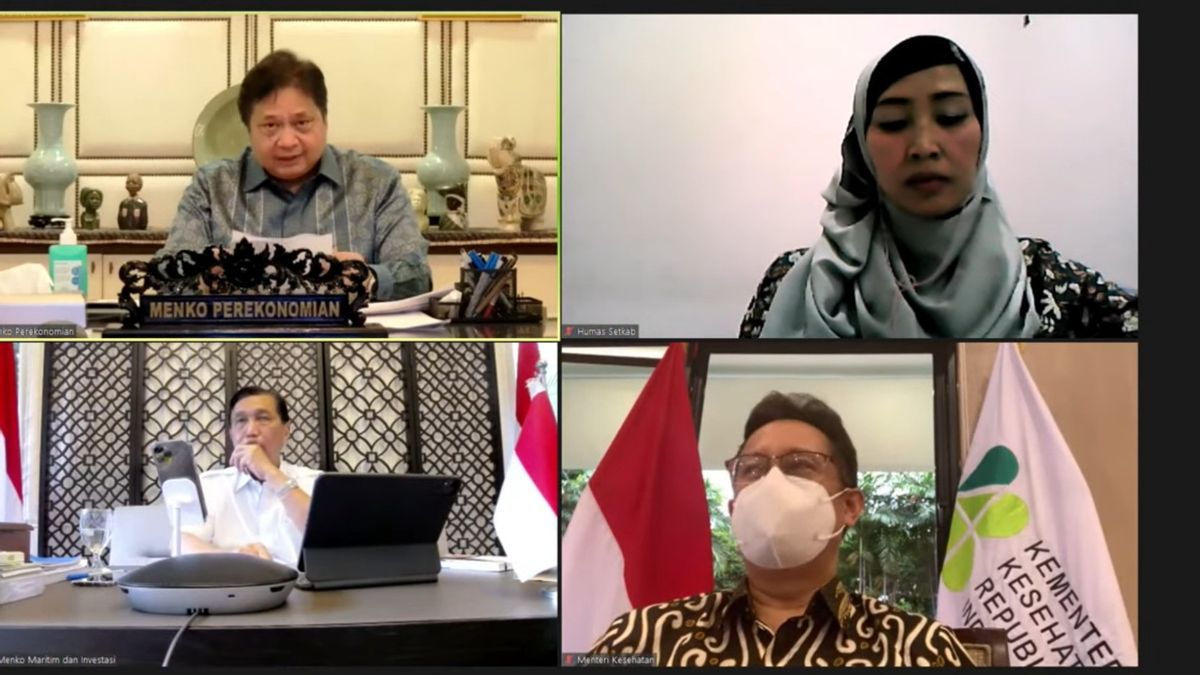JAKARTA - The government has decided to extend the implementation of restrictions on community activities (PPKM) outside Java-Bali for two weeks, starting in early March 2022. The extension of the restrictions was carried out because the government paid attention to indicators of an increase in active cases of COVID-19.
PPKM Outside Java and Bali Coordinator Airlangga Hartanto said daily confirmed cases outside Java and Bali were still increasing. Cases outside Java and Bali even contributed 31.7 percent of the national cases or 183,448 cases.
"The extension will be carried out between March 1 and 14 outside Java-Bali," he said at a virtual press conference, Sunday, February 27.
In detail, Airlangga continued, as many as 63 regencies or cities currently have PPKM level 1. While 205 districts or cities are at level 2. Meanwhile, districts or cities with PPKM level 3 status have jumped to 320 regions.
Meanwhile, the provinces with the highest increase in COVID-19 cases were North Sumatra, West Kalimantan, Lampung, Riau Islands, West Sumatra and Riau. The highest effective reproduction rate was recorded in Sulawesi with a value of 1.19, followed by Sumatra and Kalimantan with 1.17 respectively.
"The government together with regional governments continue to monitor steps so that (COVID-19 cases) can be mitigated and anticipated," he said.
In addition, Airlangga said that along with the surge in COVID-19 cases in the country, there is a trend of increasing the bed occupancy rate (BOR) or the occupancy rate of hospitals outside Java and Bali.
For example, BOR in North Sumatra hospitals reached 35 percent with 23,563 active cases. Then, in East Kalimantan, the hospital BOR was 41 percent with 19,573 active cases. Meanwhile in South Sulawesi, the BOR rate reached 29 percent with 18,954 cases.
"The overall average BOR outside Java-Bali is 30 percent. It's still below the national average of 36 percent," he said.
To anticipate a spike in cases in the regions, said Airlangga, the government continues to increase the number of centralized isolation units. Currently, the total number of isolation rooms continues to be 35,476 and can be increased to 48,799.
"Currently, only 2,983 are used or still low at 8.64 percent," he said.
The English, Chinese, Japanese, Arabic, and French versions are automatically generated by the AI. So there may still be inaccuracies in translating, please always see Indonesian as our main language. (system supported by DigitalSiber.id)













